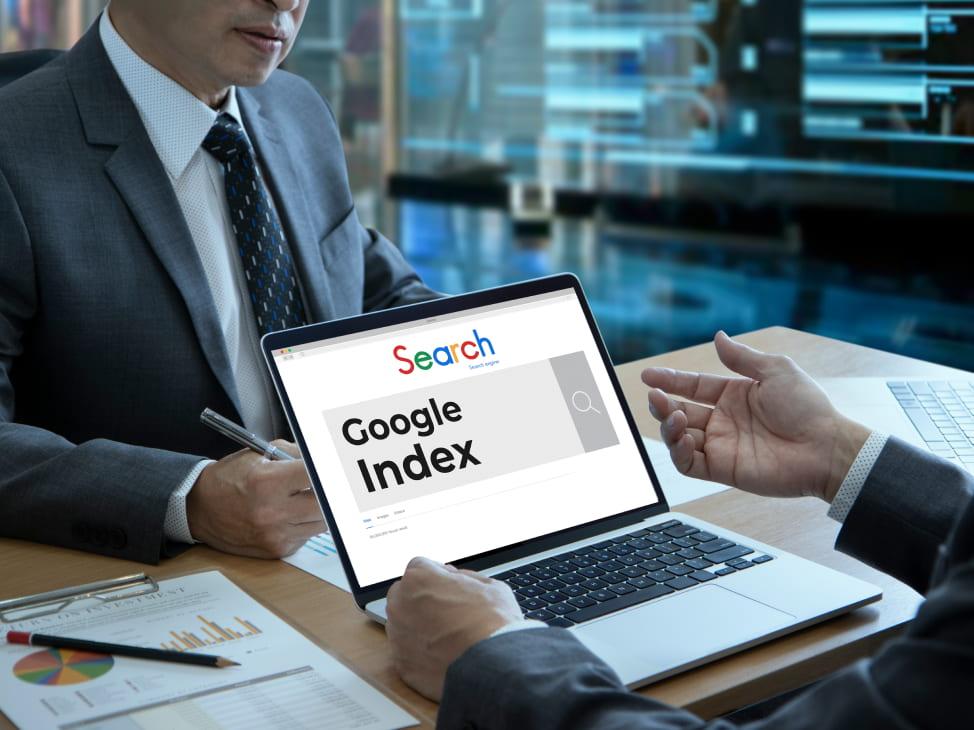
Today, we will explore indexing, which is a fundamental element of an effective SEO strategy. It ensures that your content is visible to search engines. Indexing also allows you to attract organic traffic that is vital to the success of any web page.
It's important to understand the principles of indexing and eliminating common mistakes. Utilizing best practices is also essential to significantly improve your position in search results. This, in turn, will lead to growth for your business. Indexing issues can prevent Google from accessing and storing your content correctly.
This can limit your website's visibility and hurt your SEO performance. You must regularly verify that your pages are indexed and address any issues promptly. This is important for optimal SEO. We'll show you how to check if Google has indexed your website. Understanding these essentials can help you proactively monitor your website’s visibility and maximize organic traffic. These fundamentals also will ensure your SEO efforts are genuinely effective, so let's dive in.
How to Check If Your Pages Are Indexed in Google
Want to check your Google index status? There are several reliable methods on how you can do it. Here’s an overview of the most effective techniques:
- Google Search Console: This tool lets you check your site's presence in search results. You can see if specific pages are indexed in the "Coverage" or "URL Inspection" sections. You can identify any issues preventing indexing. This tool offers detailed indexing data and alerts for issues, and it is directly from Google. It requires account setup and site verification. This tool may have a slight learning curve for beginners.
- Third-Party Indexing Checkers: Several Google-indexed page checker tools are Ahrefs and SEMrush. They allow you to analyze index status across multiple pages. These tools provide insights into crawlability, errors, and broader SEO metrics. They often offer in-depth SEO data. This is great for large websites needing to track many URLs. This tool is paid, but may have a limited free trial.
- Inspect Crawlability with Robots.txt and Meta Tags: Do you want to check if the page is indexable? Ensure no "no index" tags or restrictions exist in your robots.txt file. It will prevent Google’s bots from accessing your pages. This tool prevents accidental blocking and fixes issues if they are found. It requires technical knowledge, not an indexing check directly. This is essential for troubleshooting.
Using Google Search Console to Check Indexing Status
Let's explore how to check Google indexing status with Google Search Console. Follow our simple steps:
- Sign in to Google Search Console: Log into your Google Search Console account. If it’s your first time, add your website. Then, verify ownership to access the indexing data.
- Open the Coverage Report: In the left-hand menu, click “Coverage” under the “Index” section. The Coverage report provides an overview of your indexed and non-indexed pages. It comes along with any errors preventing Google from indexing certain pages. Ones with issues affecting indexing. Pages indexed but with potential problems. Successfully indexed ones. Pages are not indexed, often due to intentional settings.
- Use the URL Inspection Tool: Let's look at how to check if a page is fully indexed. Enter a specific one at the top. This tool shows if a page is indexed or needs troubleshooting. You can also request indexing if the page isn’t yet indexed.
Using these tools helps you quickly identify issues and make necessary adjustments. You will ensure Google can properly access your content. It improves visibility in search results.
Manual Check with Google Search Operators
You can use the "site:" search operator to find indexed pages in Google without special tools. This quick method shows if it has indexed specific pages or all pages on a website. Let’s explore it:
- Use the "site:" In Google’s search bar, type site: yourdomain.com. Replace this link with your website URL. This search will return a list of all indexed pages from that domain. You will know what indexed pages are.
- Check Specific URLs: Type site: yourdomain.com/page-url to check if a particular page is indexed. If the page appears in the results, it’s indexed. If it doesn’t, Google hasn’t indexed it yet.
Free Tools for Checking Google Indexing Status
A free website index checker can simplify tracking your site’s visibility in Google Search results. This is especially true if you want to check whether specific pages are indexed. You may also want to check if your site is discoverable. There are some popular free tools that help you explore Google's indexing status. Let's discuss them:
- Google Search Console: This tool helps monitor your site’s presence in search results. It offers comprehensive data on index status, issues, and errors. The "Coverage" report shows which pages are indexed or excluded. The "URL Inspection" tool lets you check if individual pages are indexed. It allows you to request indexing. This is free, detailed data directly from Google, with easy error diagnostics. This tool requires account setup and basic knowledge of its interface.
- Small SEO Tools (Google Indexed Pages Checker): You enter your domain there. You can check the number of indexed pages in Google. It’s quick and requires no setup. This makes it an excellent option for those wanting a quick “Is my page indexed” answer without detailed reports. This tool is fast, easy, and requires no registration. This is limited to checking if pages are 100% indexed. It happens without providing error insights or additional SEO information.
- Ahrefs Webmaster Tools: Offers a free version with “Site Explorer” for tracking indexed pages. It also helps check for indexing or crawl issues. It provides limited access to premium SEO features. They are keyword tracking and backlink analysis. Broad SEO data and indexing insights are ideal for beginners. The free version has restricted features compared to the full, paid version.
Using these free tools helps you to manage how to check if Google indexes websites. You will also quickly address any visibility issues.
Third-Party SEO Tools to Monitor Indexing
Third-party SEO tools provide comprehensive options for larger websites. They also suit those managing many pages. They are important for tracking indexing status. These platforms help you understand how to know if Google indexes a page. They offer additional SEO insights. Here are some valuable platforms. They will help you to manage how to tell if Google indexes a page:
- Ahrefs: These' “Site Explorer” and “Site Audit” tools allow users to view indexed pages. It can identify crawl issues and track changes in indexing status over time. Ahrefs is helpful for deeply analyzing indexing, SEO, and backlink data. This tool makes it ideal for more significant sites or competitive industries.
- Moz Pro: This platform offers tools to check indexability and track keyword performance. It has reports on crawl errors and indexing obstacles. The “Site Crawl” feature ensures pages are optimized for search engines. This platform has straightforward interfaces. This is ideal for monitoring indexing and other SEO essentials, especially for medium to large sites.
- SEMrush: Such platforms have “Site Audit” and “Position Tracking” tools. They show how to see if Google indexes a page. They monitor keyword rankings and content performance. It identifies any barriers to indexing and provides SEO recommendations. All-in-one SEO solution that is especially helpful for analyzing large sites. It also explores web pages with frequent content updates.
These tools allow for detailed indexing status monitoring and quick problem identification. They are also crucial for greater visibility into SEO metrics. They are essential for larger websites aiming to stay competitive in search rankings.
How to Interpret Indexing Reports
Understanding how to read indexing reports improves your site’s visibility. These reports are crucial. You will be able to learn how Google sees your page. It also identifies any issues affecting its appearance in search results. Here’s how to interpret the data:
- Identify Indexed and Non-Indexed Pages: Google can access and display them in search results. Non-indexed pages are invisible to users. Check for essential pages that aren’t indexed. These may need technical adjustments.
- Review Indexing Errors: “Server Errors” (5xx codes) or “Not Found” (404) indicate that Google couldn’t access certain pages. Fix server issues by adjusting server settings. They ensure pages aren’t removed or redirected inappropriately.
- Investigate Warnings: They often appear for pages with “Noindex” tags. These pages are blocked in robots.txt. These may indicate intentional exclusion or misconfiguration. Remove the “Noindex” tag if the page should be visible, or update robots.txt to allow Google to crawl it.
It's important to regularly review these reports. So, you can check if a page is indexed. You can make proactive adjustments. They help Google access. This approach will also rank your content more effectively.
What to Do if Your Pages Aren’t Indexed
Here are common reasons and solutions. They will address a problem if your page isn’t indexed. Use these solutions if your pages aren't appearing in search results. Here's how to check if Google indexes the website:
- Improve Crawlability Ensure Google’s bots can access your site. Adjust robots.txt to allow crawling. The "Coverage" report in Google Search Console shows if pages are blocked.
- Optimize Page Speed and Mobile Compatibility: Slow-loading or non-mobile-friendly pages may exist. They cannot index easily. Use PageSpeed Insights to boost load speed and ensure mobile responsiveness.
- Check for "Noindex" Tags: A page with a “noindex” tag won’t be indexed. Use Google Search Console’s “URL Inspection” tool to check. Remove the tag if this page is indexed.
- Resolve Duplicate Content: Duplicate or thin content can limit indexing. Add unique information and use canonical tags to prioritize the main version.

Best Practices for Ensuring Google Indexing
Let's improve your site’s visibility to overcome competitors. Also, you will achieve success in your business. Here's what you need to know number of pages indexed by Google:
- Use Proper HTML Structure: A clean, well-organized HTML structure is vital. It makes it easier for Google to crawl and understand your site’s content. Ensure headers (H1, H2, etc.) and metadata are correctly used.
- Create High-Quality, Unique Content: Pages must have valuable, unique information. It is more likely to be indexed. Focus on producing high-quality content that provides value to readers.
- Submit an XML Sitemap: This practice helps Google locate and index all critical pages. Submit your sitemap through the Search Console. Ensure the number of indexed pages grows consistently.
- Optimize Internal Linking Link key pages to help Google navigate your site. This improves crawlability and increases the chances of indexing deeper pages.
- Monitor Indexing Regularly: Check your site’s index status in Google Search Console. It will detect any de-indexing issues and maintain a stable number of indexed pages.
Monitoring and Maintaining Your Site’s Indexing Over Time
Maintaining your site's indexing status ensures visibility in search results. Here are effective strategies to monitor and maintain your site's indexing:
| Strategy | Description |
| Regular Checks | Use Google Search Console to check if pages are frequently indexed. Set reminders to review your site's indexing status at least once a month. |
| Update Content Regularly | Keep your content fresh and relevant. Encourage Google to revisit and index your pages. Regular updates signal to Google that your site is active. |
| Monitor Technical Health | Conduct routine audits. Identify and fix technical issues that could impede indexing, such as broken links or slow load times. |
| Review Search Console Reports | Analyze performance and coverage reports to spot any pages. They may have been 100% deindexed or are facing indexing issues. |
| Address Visitor Satisfaction Issues | Ensure your website is user-friendly and mobile-responsive. Poor user satisfaction can negatively impact indexing. |
Does Google index my website? You can understand it by implementing these strategies. We have prepared all the key information for you. Need help optimizing your site's indexing? Contact us today.
learn with mettevo
view blog


Are You Ready To Grow Your Website?
Understanding the ins and outs of website growth, we help ensure that your site grows over time with ever-increasing reach and accessibility. Not only do we employ the latest digital marketing techniques for driving traffic directly to your website, but our strategies also focus on gaining loyalty from those visitors so they come back again and again.
Leave your contacts to get a comprehensive and aggressive digital marketing plan taking your business to new heights.